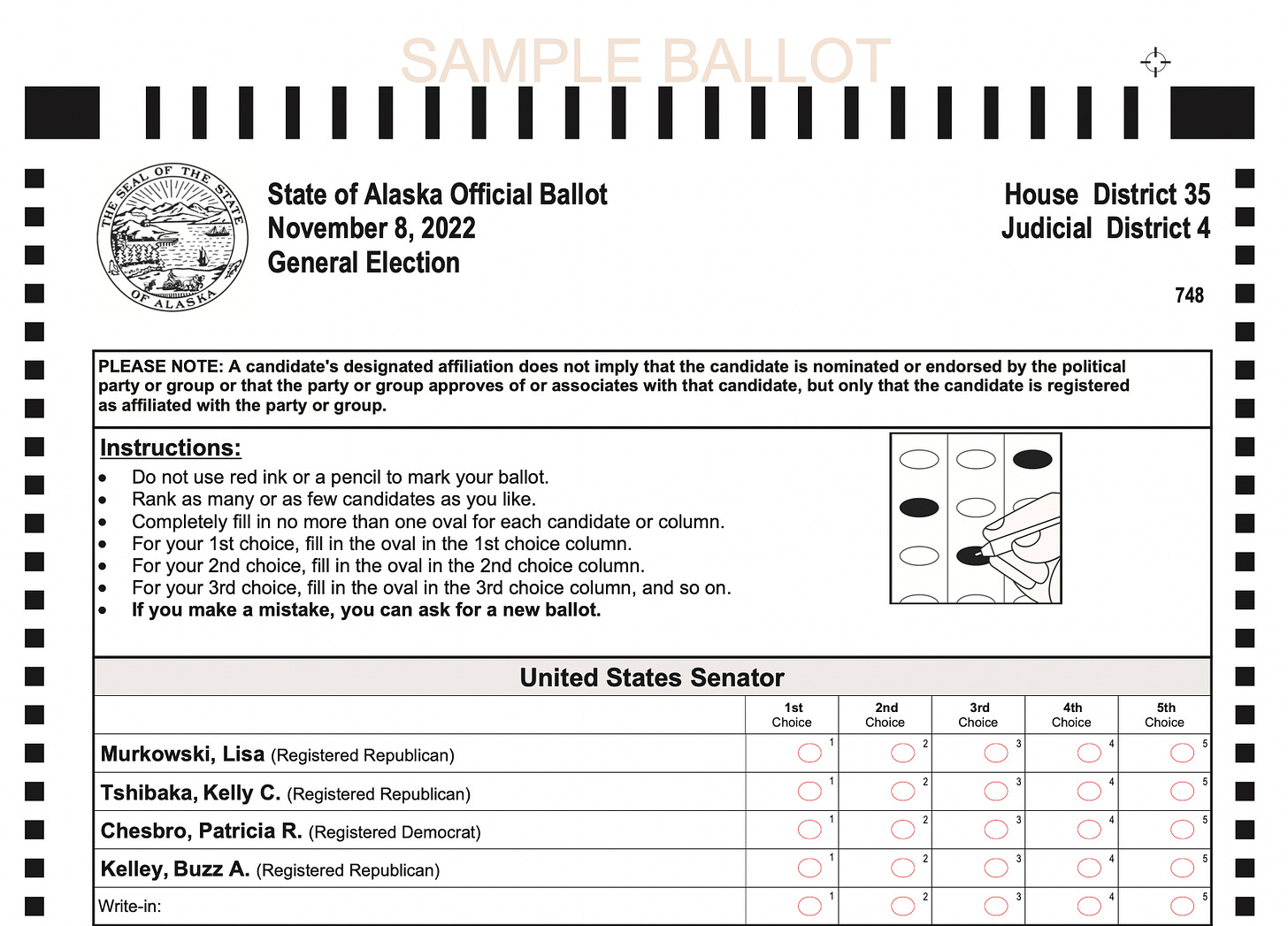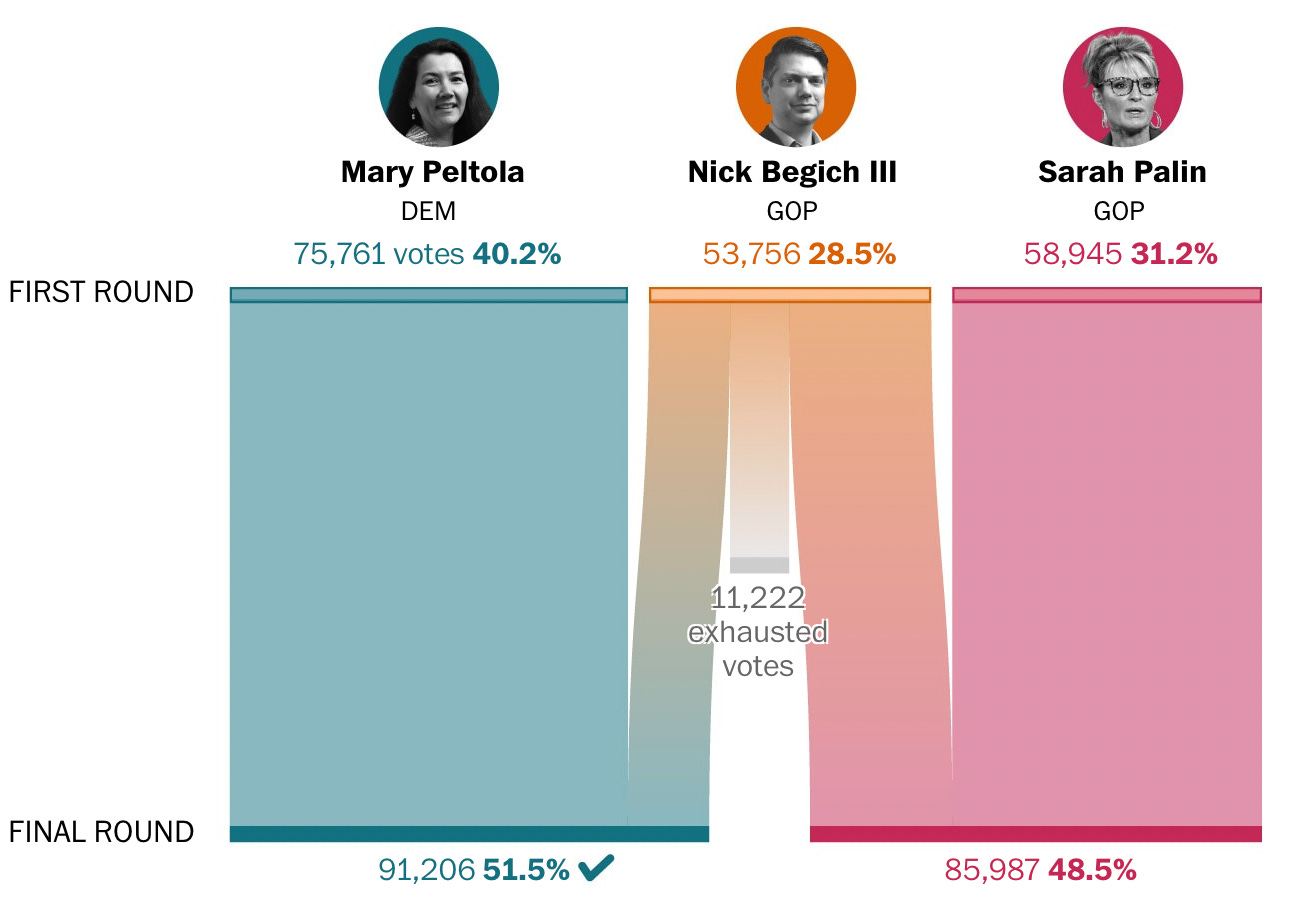How Ranked-Choice Voting Works in Alaska
Ranked-choice voting has come to Alaska, and voters will be able to rank candidates in the General Election on November 8th.
Heading to the polls on November 8th? I hope so! In a year filled with elections, this one is important. You can see who I’m supporting by clicking here.
When you get to your polling place or pick up your ballot in the mail, there will be up to four candidates for each seat in front of you (plus a write-in option), those candidates having already gone through an open primary process earlier this year (which, confusingly, had voters pick just one candidate per seat, as primaries will continue to be choose-one).
Voters will be able to rank their preferences in order of 1 to 5 (or 1 to however-many-candidates-are-running-for-the-same-seat + a write-in option). You don’t need to rank every candidate, but your impact on the results stop if the candidates you did rank are eliminated.
Don’t skip around in the rankings, and don’t rank one person for more than one place. These actions can get your ballot invalidated.
If one candidate immediately has over 50% of the first-place votes, they win their seat. If none of the candidates receive 50% of the first-place votes in the initial tally, then the rankings come into play.
The candidate with the least amount of first place votes is eliminated. Voters who ranked the eliminated candidate first will have their votes assigned to their 2nd choice.
If one candidate has over 50% of the vote after this tabulation, then they are the winner. If not, then the next lowest place candidate is eliminated.
Voters who ranked the eliminated candidates first will have their votes assigned to the highest ranked candidate remaining on the ballot. And so on and so on, until one candidate has over 50% of the votes.
If voters only rank one candidate and their candidate of choice is eliminated, then their votes no longer count in the final tallies.
Does that make sense?
You can find sample ballots from the state of Alaska here.
An Example from this years Special Election
Ranked-choice voting already debuted during the special election to fill the seat of late Congressman Don Young earlier this year.
In the June special primary, 48 candidates were on the initial special primary election on June 11th. Those were whittled down to 4 names, which became 3 after Al Gross dropped out of the race. Mary Peltola, Sarah Palin, and Nick Begich ultimately ended up on the August ballot.
Initially Mary Peltola was ahead, but had less than 50% of the votes. Nick Begich, as last place in the initial tally, was eliminated, and his second place votes passed to the remaining two candidates. Those that didn’t rank anyone beyond 1st were “exhausted votes” and did not count in the final tabulations.
Ultimately, Mary Peltola won with slightly over half of the final tally.
Pros and Cons
A real benefit to voters is the ability for your votes to matter even if your top choice doesn’t win. Alaskans can look and take a deep dive into which candidates they’d like to see represent them, and rank them accordingly. However, this relies on voters being informed about their choices, and knowledge of how ranked-choice voting works.
The biggest drawback to this system is public perception that it either invalidates or corrupts the will of voters. This seems to be primarily coming from the conservative corner… who did not win the one ranked-choice race Alaska has had so far.
Their loss says more about the vitriol (and real differences) between Sarah Palin and Nick Begich than any failure of the system, however. If everyone who had voted for Begich had ranked Sarah 2nd, she would have been the winner. But that didn’t happen.
Both a pro and con, depending where you’re sitting, is that this system hurts traditional political parties, including ending party primaries in favor of an open, “jungle” system. It will likely help moderate candidates with a broader appeal, especially those that sometimes stand against their political parties (like Lisa Murkowski and, perhaps, Mary Peltola).



